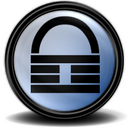Password manager
A Password manager makes it easier to remember all your passwords and to use different passwords for different services.
There are many password managers available, see below why we recommend KeePass.
Contents
Install KeePass
The program can be downloaded (or link to a special version) can be found at: keepass.info/download.html for Android use Keypass2Android
Choose version 2.* - the file formats of version 1.* and 2.* are not compatible.
You can keep the KeePass file on a cloud drive or somewhere else where you can reach it from anywhere (use a strong password). There is also a portable version of the program which does not need to be installed and can be placed on a cloud drive or USB stick.
Lock KeyPass automatically
The default setting is to leave the database open once it has been opened. This will enable anybody who gets access to your PC to see all your passwords. You should set it to lock automatically after a few minutes in:
Tools -> Options -> Security tick "lock Workspace after KeePass inactivity"
Use Autotype
You can use KeePass to look up passwords in a list or you can copy username and password in different ways be right clicking on an entry, but KeePass can also type in Username and Password from an open database in browsers and other programs.
If the title in the entry is the same as the title of the window where you log in, you can click in the 'username' field in the browser and press Ctrl + ALT + A to insert username and password
If the password database is locked you must supply the master password
For details on setting up autotype see the HELP pages: keepass.info/help/base/index.html under "features"
Help Pages
KeePass has lots of features. The help pages can be found at [|keepass.info/help]
Why choose KeePass
- KeePass is a free open source password manager.
- It works on almost all platforms, Windows, Mac, Linux, Android, IOS and a few others
- Your encrypted file can be synced to a cloud service like Dropbox, Google Drive or One Drive, put on a Usb stick or you can have it as a local file only.
- It is free also for commercial use, where you would have to pay for i.e. LastPass to use it for work.
- It has been around for many years and has a good reputation
- Several different programs can read the files and the contents can be exported in standard formats, so you do not have to depend on a single company's survival
